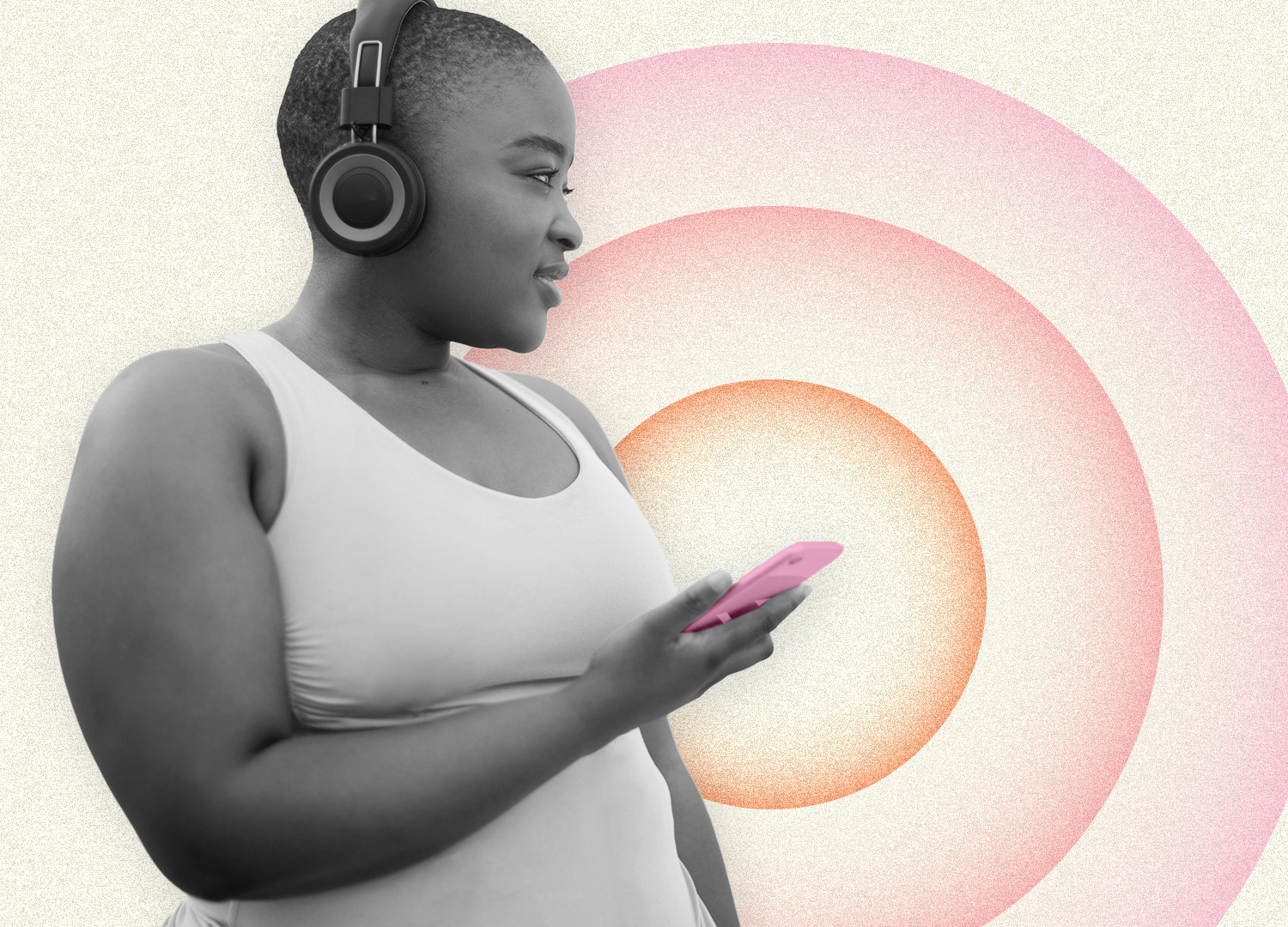
A room of people lay in corpse pose, eyes closed, while an instructor dances their fingers across alchemy crystal bowls and crucibles. Wind chimes and gongs reverberate throughout the softly-lit room, and words of calming meditation flow through the air. Like a weighted blanket for the nervous system, a symphony of sound is created; serene contentment washing over every limb. It doesn’t just sound good—it’s doing good: The experience lowers heart rate and stress hormones; it increases focus and clarity.
That’s the mind-body-soul noise submersion of a sound bath—at least as Western culture has come to define it. This modern incarnation of sound healing, typically conducted in aesthetically pleasing wellness studios, was ushered in with the California yoga culture of the '60s and ‘70s. The baseline concept—that sound is healing—however, dates back centuries.
Sound “is a fundamental part of human culture,” explains Farzana Ali, a London-based sound therapist and author of Sound Healing: How to Use Sound to Beat Stress & Anxiety. “[It’s] ingrained in the human experience to be rhythmic and want to enter into an altered state.”
Now, the age-old ritual—which has often been used as a foil to our always-plugged-in, fast-paced lives—is getting a new, tech-centric twist. Positioned as an at-your-fingertips sound bath alternative, cutting-edge tech innovations are removing the “sound bath” nomenclature and holistic component. Instead, they merge the long-held belief that sound is a healing mechanism with research-driven data points and AI algorithms. It’s shaping up to be the next chapter for sound baths, but some question how the sterile iteration fits into what’s long been regarded as a highly spiritual space.
For starters, there are no crystals. There is no sit-in-a-circle-and-soak-up-your-neighbor’s-energy vibes. But when it comes to tech’s take on sound healing, well, there is sound. Audio-Technica, a well-respected audio equipment manufacturer, released a set of wireless earbuds pre-programmed with a “unique soundscape function to produce sounds for concentrating, relaxing, or meditating” to make the power of sound harnessable on the go. Then there’s the new app Soaak, rolled out globally this year with the goal of improving focus, sleep quality, and memory recall.
Other companies are dipping into what industry insiders call functional or wellness music—essentially the kind of acoustics you’d hear in a traditional sound bath experience. Endel, an AI-powered app that creates personalized soundscapes, has even rolled out neuro-targeted renditions of songs with both Universal Music Group and Warner Music Group so users can boost creativity or energy to the beat of Sia or a James Blake soundscape. “We’re trying to involve as many big-name artists as possible so they can expose their audiences to the healing benefits of sound,” says Oleg Stavitksy, the CEO and co-founder of Endel.
The community element creates an intentional space to explore emotions we don’t have space to do on our own.
Sava—a device helping users reach a higher state of consciousness via vibro-acoustic technology—has adopted a similar strategy. Guided by Empire of the Sun musician Nick Littlemore, the company has a wide catalog of songs to help facilitate deep rest or to enhance creativity and focus—many in tandem with established artists. “These musicians are now thinking about a whole new category and a new dimension as to what creating music is. They’re creating music for a sensory-based feeling,” says founder Ray Kelly.
For the tech companies leading the charge, their right to innovate off sound baths’ historic healing properties isn’t just a natural step—they believe it’s an evolution. “This very overstimulating world needs technological solutions to the challenges we face as a society,” says Stavitsky. According to the American Psychological Association, over 42 million people suffer from anxiety, and nearly half of U.S. adults report stress that negatively affects their behavior. And while there are debates to be had about how our devices contribute to those feelings, we also turn to them for moments of peace. We use our phones to meditate, to remind ourselves to exercise, and to chat with therapists. Now, we can partake in the healing rhythms of sound, too. “If part of what we're doing on our phones is seeking calm, and we're able to find it, then I think that's a great thing,” says Jackie Cantwell, a sound practitioner.
And that can happen in a spiritually-charged setting—or while walking down the street, experts say. “Sound waves effectively calm the mind and body by changing the rhythms of our physiology,” says Sara Auster, a world-renowned sound therapist and author of Sound Bath: Meditate, Heal, and Connect Through Listening.

Sound alone is not the salve, though. According to traditional practitioners, community and connection are equally as important when partaking in a sound bath experience. A report released last year by the U.S. Department of Health and Human Services found that half of adults experienced loneliness. Disappearing into our headphones likely doesn’t help with the malaise of that isolation.
When you are in a class, you are not just hearing the sound, you are feeling the sound...you can’t recreate that at home.
“You can’t replicate the difference an in-person clinic can make,” Ali says. “It’s the same reason why we might all love listening to Taylor Swift on the radio, but we still want to go to the concert—it’s a different feeling.” In person, certain crystal charges improve the sound bath experience. Positive energy travels between individuals in a group setting. There’s no clinical study to prove it (yet), but what we think of as woo-woo is often, at its core, just un-researched science.
A class is a place to meet individuals on similar spiritual journeys or in a period of rediscovery. “The community element creates an intentional space to explore emotions we don’t have space to do on our own,” says sound therapist and founder of Vibrobath Devi Mambouka. “I think that’s what attracted me to sound baths in the first place—being an immigrant coming to the United States—it felt so familiar and reminded me of home.”
Connection isn’t only important socially, it’s inherently key to the practice itself. “Sound healing is actually a very somatic experience,” Ali says. Most tech-based sound therapy mediums commonly lack vibration. “When you are in a class, you are not just hearing the sound, you are feeling the sound. It helps release that stress and anxiety from your body—you can’t recreate that at home.”
While experts see downsides, they also see a boon: access. “Around 10 years ago, sound baths became a little exclusive,” Auster says. There became a notion that you had to be wealthy, into green juice and Goop, or crystal astrology to reap the rewards. Sound bath classes can be as much as $100 a pop, with some costing as much as $500 for an hour-long session. But most apps are free and available to anyone, anywhere.
In that way, experts say the tricked-out sound bath can be additive—not a replacement, but an option. “All technologies come with good and bad—since the dawn of time,” Mambouka says. “And so, we need to see where we can strike a balance.”







